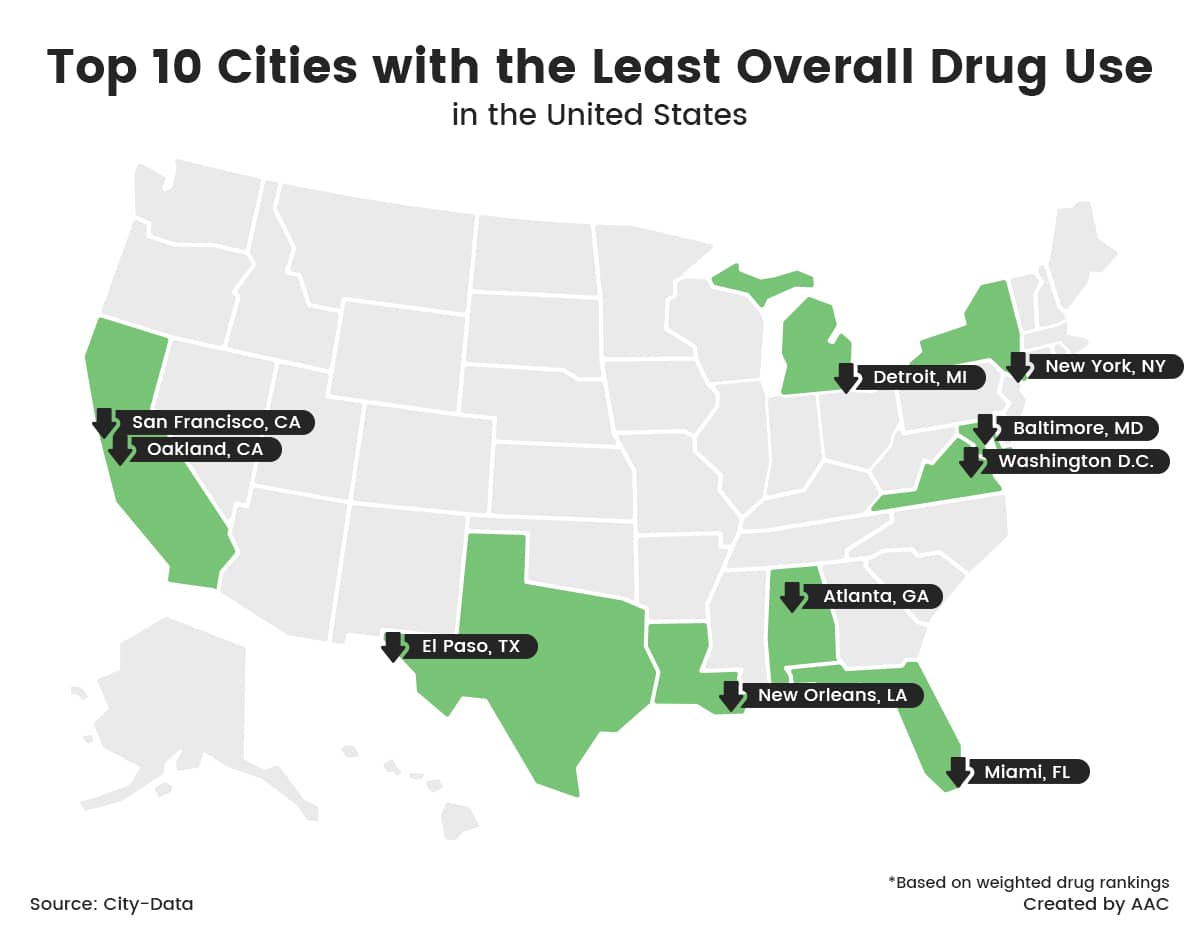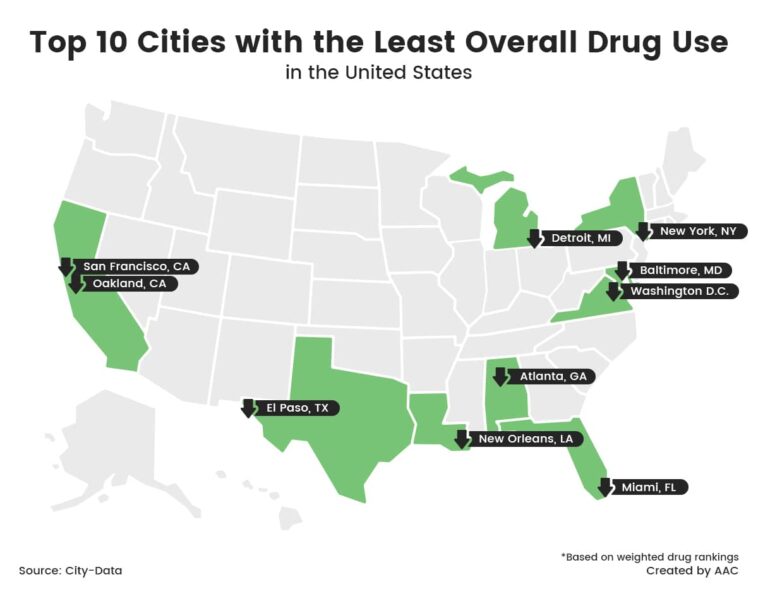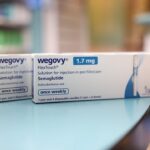
Understanding the New Data on Urban Drug Use Trends
The latest figures released by American Addiction Centers shed light on the current situation regarding drug use in numerous U.S. cities. As a legal observer, I find it essential to take a closer look at these reports to help readers figure a path through the legal and social implications of such data. The detailed data not only highlights which cities are struggling the most with drug use but also calls for careful consideration of legal policies and law enforcement strategies.
In this opinion piece, we will work through the tangled issues surrounding drug use trends, take a closer look at the subtle parts that make each region unique, and discuss the key legal challenges that arise from this data. While the figures themselves may appear overwhelming, they offer an opportunity to make sense of how different communities are affected and what may be done to address these problems.
Broken Down Drug Use Statistics by City
A closer look at the released data reveals significant regional differences. For instance, Phoenix, Arizona, leads with the highest percentage of people who have used cocaine (23.3%) and methamphetamine (15.1%), while Omaha, Nebraska, tops the list for heroin (3.4%) and marijuana (66.2%) use. These numbers can be seen as the tip of an iceberg that hides many tricky parts in related legal and societal matters.
Below, we present a consolidated view of the data which will help us see the spread of drug use across different cities:
Marijuana Use by City
| City | Percentage of Marijuana Use |
|---|---|
| Omaha, NE | 66.2% |
| Mesa, AZ | 65.0% |
| Tulsa, OK | 64.9% |
| Minneapolis, MN | 64.8% |
| Indianapolis, IN | 64.6% |
| Phoenix, AZ | 64.4% |
| Wichita, KS | 64.4% |
| Portland, OR | 64.2% |
| Nashville, TN | 64.2% |
| Oklahoma City, OK | 64.1% |
Cocaine Use by City
| City | Percentage of Cocaine Use |
|---|---|
| Phoenix, AZ | 23.3% |
| Mesa, AZ | 22.5% |
| Omaha, NE | 22.2% |
| Oklahoma City, OK | 22.0% |
| Las Vegas, NV | 21.9% |
| Tulsa, OK | 21.8% |
| Wichita, KS | 21.8% |
| Colorado Springs, CO | 21.8% |
| Tucson, AZ | 21.8% |
| Fresno, CA | 21.8% |
Heroin and Methamphetamine Trends by City
For heroin and methamphetamine, the statistics depict the following picture:
- Heroin Use: Omaha, NE, and Indianapolis, IN, lead with 3.4% usage, followed by Columbus, OH at 3.3%.
- Methamphetamine Use: Phoenix, AZ is on the top with 15.1% usage, with Mesa, AZ closely following at 14.1%.
It is important to realize that behind these percentages lie complicated pieces of information related to social dynamics, law enforcement pressures, and legal policies that affect these areas. Let us now work through the consequences and legal implications of such figures.
Regional Variations in Drug Consumption and Legal Implications
The regional differences in drug use figures are more than just numerical curiosities; they signal varying issues that come with distinct legal challenges. In places where drug use is extremely prevalent, law enforcement and public policy are forced to figure a path that balances treatment with punishment.
Legal Frameworks in High-Prevalence Cities
Cities such as Phoenix and Omaha are facing a double-edged sword. On one side, high rates of drug use indicate the urgent need for public health interventions, while on the other, they call for legal measures that may, at times, appear intimidating to those affected. It is critical to examine how existing legal frameworks are reacting to these challenges.
Legal experts point out that:
- The enforcement of controlled substance laws must take into account the nerve-racking factors of both deterrence and rehabilitation.
- Poorly designed laws can end up being counterproductive by pushing users into the shadows, thereby complicating law enforcement efforts.
- There is a significant need for policies that are both compassionate and effective, ensuring that a fine balance is struck between criminal justice and public safety.
At a time when public opinion is shifting and legal reforms are under constant review, it is super important for lawmakers to take these subtle details into account while developing policies that can effectively confront these trends.
Impact on Law Enforcement Practices
The high rates of drug use inevitably put additional pressure on law enforcement agencies. Police departments across these urban centers report that their resources are increasingly required in drug-related investigations and in managing public disturbances related to substance abuse.
Some of the major challenges include:
- The need to steer through tangled issues of protecting civil liberties while ensuring community safety.
- Ensuring that arrests and detentions do not inadvertently hamper efforts to support rehabilitation.
- Facing networked legal processes that are on edge regarding providing adequate support for those suffering from addiction while also making arrests when necessary.
By managing your way through existing protocols and community outreach, law enforcement officers are constantly trying to find a balance between safe legal handling and compassionate treatment of drug users. These efforts call for coordinated approaches that include social workers, legal experts, and community leaders.
Public Policy: Striking a Balance Between Enforcement and Rehabilitation
In cities that register high levels of drug use, public policy is at a crossroads. On one hand, tougher legal measures may be required to deter drug trafficking and distribution; on the other, rehabilitation efforts are equally critical to address the root causes of addiction.
Issues that lawmakers and public policy experts have highlighted include:
- The importance of community-based rehabilitation programs that can help individuals break free from the cycle of addiction.
- Developing legal measures that are flexible enough to treat drug-using populations with care rather than with overwhelming punitive measures.
- Ensuring that public health interventions are not sidelined by aggressive criminal policies that could make it even more off-putting for people seeking help.
Developing Integrated Legal and Health Approaches
Municipalities are increasingly looking into legal reforms that integrate health support systems into the criminal justice framework. Such reforms include drug courts, diversion programs, and community outreach initiatives that are designed to support rather than isolate drug users.
Key benefits of integrated approaches include:
- Reducing recidivism by addressing the underlying causes that drive individuals to substance abuse.
- Allowing for more flexible sentencing that can accommodate treatment programs alongside legal oversight.
- Enhancing public safety by showing that the legal system is full of problems but also serious about reforming its approach for long-term community benefits.
By combining these strategies, communities stand a better chance at easing the nerve-racking tension that high drug use rates often generate, and simultaneously work toward reducing harmful behaviors while ensuring that those in need of help receive it.
Potential Changes to Legislation Based on Drug Use Trends
The recent data also prompts us to consider whether changes in legislation are required. With cities like Phoenix and Omaha at the forefront of drug use statistics, it is clear that some of the current legal measures might be too rigid or mismatched to the on-ground realities.
Reviewing Current Drug Policies
The current controlled substance laws are laden with issues that can sometimes appear overly intimidating not only for drug users but also for law enforcement trying to implement these policies. Legal experts suggest that lawmakers need to dig into these tangled issues and reevaluate existing policies with the following points in mind:
- Are the penalties too severe, thereby complicating the fine line between deterrence and rehabilitation?
- How do current laws accommodate individuals seeking help rather than punishment?
- What are the little details that might enable more community-focused approaches without compromising public safety?
Answering these questions is critical for moving forward with drug policies that are sustainable, humane, and effective at curbing the lure of substance abuse while providing an avenue for recovery.
Legal Reforms and Community Safety
Legal reforms inspired by recent findings might include:
- Introducing graduated penalties that consider drug users’ intent and their prospects for rehabilitation.
- Expanding drug court programs that emphasize treatment over incarceration.
- Allocating more resources to community policing that also focuses on prevention and outreach in high-risk neighborhoods.
Such changes are not meant to diminish the seriousness of drug-related offenses but are rather intended to offer a more nuanced and balanced approach. This approach acknowledges that while drug legislation is full of problems, there are methods by which legal policies can be better aligned with current societal needs.
Societal Considerations: The Ripple Effects of Urban Drug Trends
Beyond the realm of legal policies, the social implications of high drug usage in urban centers are significant. Communities must come to grips with the fact that these trends affect not only the individuals using drugs but also families, neighborhoods, and even local economies.
Social Impact on Families and Neighborhoods
Families in cities with higher rates of substance abuse often find themselves coping with the consequences of drug use on several levels:
- Emotional strain when a family member battles addiction.
- Financial burdens related to treatment, legal fees, and loss of income.
- Social stigma that complicates rehabilitation and community reintegration.
The societal impact extends to entire neighborhoods where the presence of high drug use can lead to a sense of fear and uncertainty. This can result in:
- A decline in property values.
- Increased pressure on local law enforcement to maintain order.
- Heightened concerns about safety and the overall quality of community life.
As communities take a closer look at these issues, it is important for both local government and legal entities to coordinate strategies that reduce these negative ripple effects while promoting recovery and resilience.
Economic Ramifications of Drug Trends
Another layer to this puzzle is the economic impact of drug use trends. High drug usage can strain public resources, affect local businesses, and contribute to a cycle that hinders economic development. Some of the tricky parts here include:
- Increased spending on law enforcement and correctional facilities.
- The diversion of funds from preventive and social programs to reactive measures.
- Potential loss of productivity when a significant portion of the population is involved in substance abuse.
Understanding these economic ripples is essential when formulating laws and policies. Legal reforms that incorporate economic support mechanisms—such as funding for community rehabilitation centers and education programs—are critical pieces in resolving this issue.
Looking at Quality of Life and the Role of Prevention Programs
No discussion of urban drug use trends would be complete without considering the quality of life for the inhabitants of these cities. Even where enforcement is strict, improving the overall well-being of residents remains a super important goal.
Importance of Community-Centered Initiatives
Communities that have seen high drug use rates often suffer from diminished quality of life. Through the introduction of pioneering prevention programs and holistic support services, there is a tangible possibility for change. Such programs focus on:
- Providing education on the risks associated with drugs.
- Creating safe spaces for youth and vulnerable populations.
- Collaborating with health services to offer counseling and treatment.
By taking a community-first approach, policymakers can ensure that prevention is not left on the backburner. Instead, it becomes a key component of a comprehensive strategy that includes legal, social, and economic dimensions.
Success Stories and Lessons Learned
There have been successful examples of community-centered initiatives in several U.S. cities, where integrated drug prevention programs have reduced the overall rate of substance abuse. Some of these success stories underscore:
- The effectiveness of early intervention strategies.
- The importance of constant engagement with local communities.
- How diversified programs that work through school systems, local businesses, and non-profit organizations can lead to improvement.
As legal reforms are contemplated, it is critical to look at these success stories not as isolated cases but as guiding lights that highlight possible paths forward for cities dealing with heavy drug usage. Each case brings its own set of lessons that are filled with small distinctions and hidden complexities which policymakers must acknowledge and address.
Evaluating the Role of Technology and Data in Shaping Drug Policy
In today’s digital age, the role of technology in monitoring and analyzing drug trends cannot be ignored. Data-driven approaches provide clear insights that help legal experts make informed decisions. In addition, technological advances are influencing enforcement strategies, treatment programs, and even community outreach initiatives.
Data Analytics in Law Enforcement
Data analytics is a critical tool for law enforcement agencies trying to figure a path through the maze of urban drug trends. Detailed analytics can help in:
- Identifying hotspots where drug-related crimes are most concentrated.
- Optimizing resource allocation for police departments.
- Tracking the effectiveness of intervention programs over time.
By relying on recent data, such as the new findings from American Addiction Centers, legal and policy analysts can see the little twists that define each region. This, in turn, allows for tailored strategies that are more efficient and directly targeted at reducing substance abuse shocks.
Social Media and Public Opinion
Another factor worth noting is the role of social media in shaping public opinion on drug policies. In many cases, social media platforms have served as a forum for debate, advocacy, and even, at times, misinformation regarding drug use. It is essential for legal experts to separate the subtle details of reliable data from the confusing bits of social media rhetoric.
Key observations include:
- Social media platforms can raise awareness about community issues, but they may also exaggerate or misrepresent data.
- Policymakers must engage with these platforms judiciously in order to promote accurate information.
- Transparent dissemination of data from reputable sources such as American Addiction Centers is crucial.
By embracing technology and data analytics, the legal system is better positioned to develop proactive policies that reflect the ongoing changes in urban drug usage trends.
Legal and Social Lessons from a Changing Drug Landscape
The evolving landscape of urban drug use forces us to reflect on the key takeaways that are emerging from recent studies. It is clear that the legal field must keep pace with these developments through flexible legal frameworks, innovative enforcement methods, and robust community outreach programs.
Balancing Compassion and Justice
One of the central lessons in this debate is the necessity of balancing compassion with justice. Drug-related laws and policies should ideally support efforts to rehabilitate individuals while also protecting the broader public from dangerous behaviors.
Considerations in this balance include:
- Ensuring that legal measures are not so intimidating that they discourage individuals from seeking help.
- Structuring penalties that recognize the need for rehabilitation rather than purely punitive measures.
- Investing in training for law enforcement so that officers are equipped to cope with the nerve-racking challenges they face on the ground.
By thinking about these issues in the context of recent data, decision-makers are being called upon to address both sides of the coin: enforcing the law while also fostering environments for recovery and growth.
Community Engagement and Legal Accountability
A recurring theme in the discussion about urban drug use is the importance of community engagement, especially in high-drug-use cities such as Omaha and Phoenix. Legal accountability is not just a matter for courts and law enforcement; it also involves community leaders and residents working together to create safer environments.
Steps that can be taken include:
- Holding public forums and town hall meetings to discuss policy changes.
- Offering educational programs on the legal ramifications of drug use.
- Encouraging cooperative efforts between local governments, law enforcement, and health services to address the subtle parts that cause disjointed policy approaches.
Such community-based initiatives help ensure that the legal system remains in touch with the real-world challenges faced by citizens, while legal reforms continue to evolve alongside these issues.
Challenges Ahead: Tackling the Nitty-Gritty of Data-Driven Policies
Even as we progress by accepting new data and reforming policies, there remain many tricky parts that need to be addressed. The statistical landscape presented by American Addiction Centers provides a basic outline, but understanding the driving forces behind these numbers requires deeper inquiry. There are several areas where further efforts are essential:
Addressing Underlying Social Determinants
It is clear that drug use transcends simple legal and criminal issues. Social determinants including poverty, lack of education, and limited access to healthcare all contribute to high drug usage rates. These factors are often intertwined with the data that we see, requiring legal frameworks to:
- Include provisions that tackle the broader social issues fueling drug abuse.
- Create community partnerships aimed at improving education and job opportunities.
- Support public health initiatives that provide early intervention and consistent monitoring.
By managing your way through these interconnected factors, communities can aim to reduce the overall incidence of drug dependence and share the responsibility for addressing the challenge.
Future Directions in Drug Policy and Legal Frameworks
Looking to the future, it is imperative to consider how laws and policies can evolve to meet changes in drug use trends. Policymakers and legal experts should explore:
- Enhanced data collection methods that help provide more detailed insights into drug use patterns.
- The integration of new technologies that improve the efficiency of law enforcement and social services.
- Policy reforms that are flexible enough to adapt to emerging trends while addressing the nerve-racking twists and turns of urban addiction issues.
Even though reform initiatives can seem intimidating and off-putting at times, the potential for positive change through innovation and collaboration remains substantial. The fine points of future policies must take into account both the statistical realities and the personal stories behind the numbers.
Conclusion: Finding a Balanced Legal Approach in a Data-Driven Era
The recent data on drug use in U.S. cities, with cities like Phoenix and Omaha taking center stage, highlights both the urgent need for change and the potential for well-crafted legal reforms. As we figure a path through the maze of drug-related legal challenges, it is crucial that the legal system embraces both technology and community engagement to address the subtle details behind urban substance abuse.
While the numbers presented by American Addiction Centers are indeed loaded with issues, they also offer a roadmap for lawmakers: one where punitive measures are balanced with robust rehabilitation programs, and where law enforcement can work in tandem with social services to build safer communities.
This opinion editorial has taken a closer look at the problematic data and the tangled issues it represents, underscoring that while the legal maze may be full of confusing bits, there remains a clear need for policies that are as adaptive as they are compassionate.
The journey forward will require the combined efforts of legal experts, policymakers, law enforcement, public health officials, and community representatives. Only by working through the various facets of the issue—ranging from the economic ripples to the fine shades of public policy—can we create a future where the legal and social frameworks provide a safe haven for all citizens affected by the alarming trends indicated in the new data.
In sum, understanding and addressing drug use in urban environments is not an issue that can be solved through isolated interventions. It requires integrated legal reforms, coordinated community efforts, and data-driven policy strategies. As this discussion continues, it is my hope that all stakeholders remember that progress, while often laden with twists and turns, is achievable through persistence and thoughtful collaboration.
We must as a society continue to take a closer look at these subtle parts and hidden complexities in order to develop structures that both prevent drug-related crimes and offer meaningful support to those impacted. The legal community, along with civic leaders, is at the forefront of introducing changes that must be both effective and compassionate, paving the way for brighter urban futures.
Originally Post From https://wjno.iheart.com/content/2025-04-14-new-data-reveals-us-cities-with-most-drug-users/
Read more about this topic at
2020 National Drug Threat Assessment (NDTA)
Drug Trafficking


